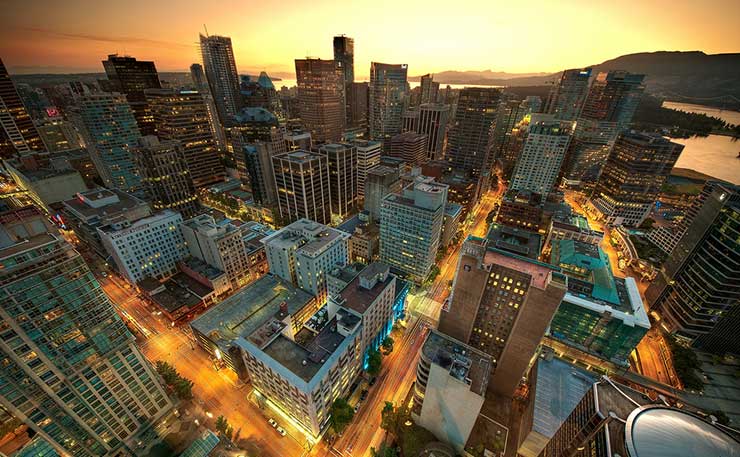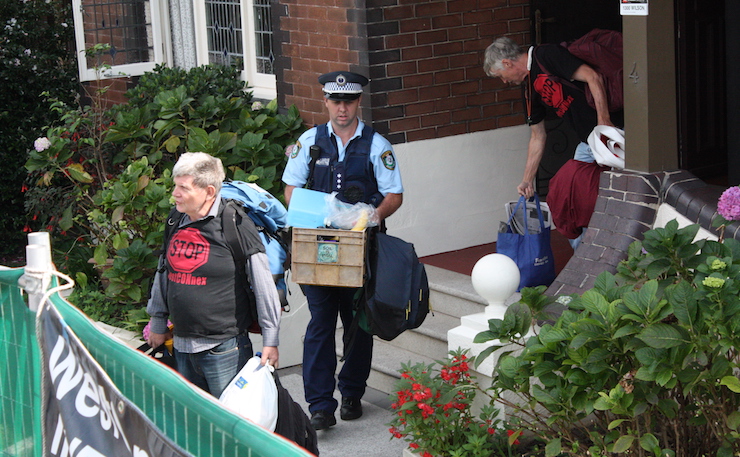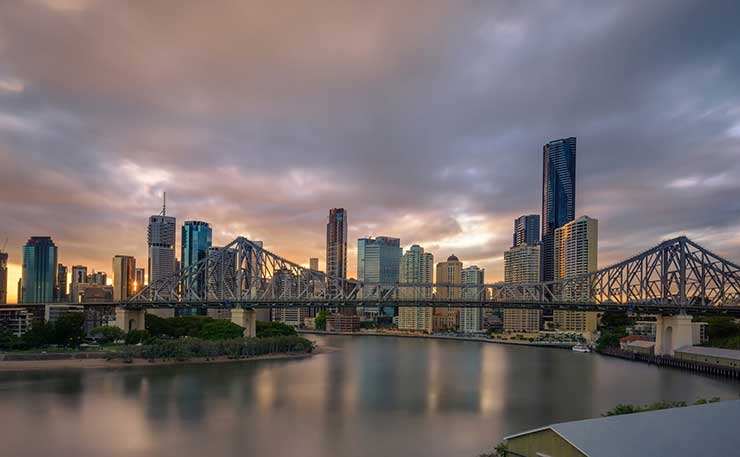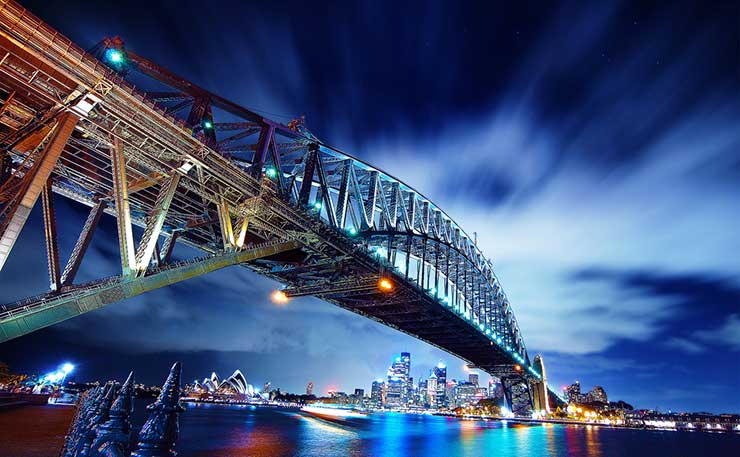Change for change sake is not a good thing. Not when it tears down your local beloved cafe, and not when it changes the faces of our cities in the interests of developers over residents. Dr Richard Hil explains.
“The most successful ideological effects are those which have no need for words, and ask no more than complicitous silence” – Pierre Bourdieu.
Change happens all the time – to you, me, and the world around us. It’s something we may or may not notice. If and when we do notice, we may not care or complain, and when we do complain, it might be only to ourselves.
But when we let things slip by, however seemingly small or insignificant, it means we’ve allowed the world to alter without action, and perhaps for the worse. That’s why, as social philosopher Julian Baggini observes in Complaint: From Minor Moans to Principled Protests, thoughtful complaint is not the same thing as whinging, but rather, lays the foundation for purposeful change.
In societies characterised by rapid change, the act of complaining takes on even greater significance. Severance with the past, social and cultural dislocation, and disconnection from each other, our social institutions and the environment are accentuated in a world where, as sociologist Zygmunt Bauman observes, “there are no permanent bonds, and any that we take up for a time must be tied loosely so that they can be untied again, as quickly and as effortlessly as possible, when circumstances change – as they surely will in our liquid modern society, over and over again.”
This sense of social impermanence is accompanied by a multitude of illusions that promise connection through various technological means or the acquisition of social relevance through material consumption.

Faced with such circumstances, complaint can become a form of cultural resistance aimed at stalling or rolling back undesirable change and promoting alternative ways of being. In neoliberal societies such practices necessarily involve considerable personal reflection in order to identify how market values permeate our everyday lives and the role of institutions in perpetuating the hegemonic order.
This critical process also requires us to look closely at our immediate surroundings and the places we frequent if we are to make sense of the changes occurring around us. Which brings me to the vexed question of my once favourite hometown café in regional New South Wales.
The changes imposed on this modest establishment in recent times have, for me at least, come to symbolise something much deeper about the process of change in an increasingly dissociative society.
The café in question – let’s call it The Willow – has been ‘renovated’ by its enthusiastic new owners. Its once colourful walls have been whitewashed, plastic chairs installed, and a sparkling new brushed-steel kitchen put on show. With the Rasta-rainbow hues gone, its garden thinned out and various trinkets removed from the front fence, the café’s soul has all but disappeared.
The most painful renovation of all is the removal of the famed noticeboard that stood just inside the main building. I invariably marvelled at that noticeboard – a portal into the town’s vibrant culture, bristling with glossy flyers advertising rebirthing programs, meditation groups, yoga classes and upcoming musical events.
Sadly, the quality of service has changed too. Admittedly, it was never perfect but that’s what made the place so alluring – the reassuring smiles, shrugged shoulders and banter as your cappuccino arrived fifteen minutes late. The newly appointed staff are nice enough but the toothy smiles seem a little too contrived, something gleaned perhaps from a TAFE hospitality course.
The introduction of the Apple tablet to take customer’s orders only adds to the sense that the café has entered a new era, with customers now attended to via a technological device rather than the once familiar jauntiness and mercurial memory.
My comments might sound like the ramblings of someone weighed down by glory days. But did my watering hole need to be spruced up in this sort of way? It was fine just as it was, or so I thought.
I don’t go there any more, not out of spite, but more because of sadness. I miss the grungy, hippy feel, the touches of Indian filigree and beaten-up busts of the Buddha. As I occasionally wander past the place, I notice that few of the old mob venture there anymore. It’s like they’ve been spooked, put off by the anodyne feel, the absence of a certain something. I suspect that many have taken themselves off to other establishments, perhaps in search of that lost soul.
What this renovation – or act of cultural destruction – bespeaks to me at least is a practice that’s infuriatingly common. That is, the introduction of something novel or new that simply doesn’t fit into an established community or place; that has no sense of historical continuity or little appreciation of a localised aesthetic, culture or belonging. It’s the act of thoughtless displacement that so invades the psyche when this occurs. If the old café never existed, it wouldn’t matter so much. But it did. You can’t help but compare and contrast.
This sort of change process happens all the time in our towns and cities. After all, who really – I mean really – consults with ‘the community’ when an office block or multi-story carpark goes up, or when an old weatherboard house makes way for a high rise, or when a supermarket supplants the local green grocery?
In such cases, community, sense of place, continuity, belonging, and character invariably play second fiddle to other concerns, many of them clearly out of synch with the human spirit.
I’ve just come back from Vancouver on Canada’s southwest coast where literally thousands of resplendent Victorian homes have been bulldozed to make way for anonymous steel-and-glass tower blocks. The developers have made a fortune at the same time as squawking on about “providing homes for people” in what is now one of the most expensive and therefore unaffordable cities on planet Earth.

On my way out of the city, I picked up a book called Vanishing Vancouver which contained hundreds of photographs of beautiful homes now consigned to history. The city’s character has been utterly transformed, its aesthetic submerged beneath commercial interests and hollow claims of progress.
Exactly the same thing is happening in Lima, Peru where my brother lives. In the upper crust area of Miraflores where hundreds of magnificent colonial homes have been demolished in order to accommodate a forest of new high rises. Tens of thousands of additional residents and cars now populate the area, meaning more congestion, pollution, and a lot less to look at.
Talking of which: I recall Prince Charles complaining decades ago about the then newly constructed 33-storey office block, Centre Point, on London’s Tottenham Court Road. The shimmering edifice – bold and imperious at the time – irked the Prince who insisted that it took everything but gave little or nothing back.
The same could be said of the homogenous architectural forms that now colonise many of our major cities, many of them designed as diminutive homes for inner city dwellers.
One major by-product of this is the increased atomisation of people who, despite all the talk of urban villages and liveable cities, remain cocooned (and indebted) in their apartments, often cut-off from any real sense of community. It makes perfect sense for corporate capitalism to have people disconnected in this way: it renders them more susceptible to the lure of consumer culture and more dependent on the service of others.
Sydney is not exempt from such tendencies, despite its efforts to create a ‘sustainable’ metropolis. Recent plans for Sydney’s future growth revealed much about the mindset of its urban planners. To the considerable surprise of the city’s denizens, few of the key indicators mentioned in the master plan touched on community life and what this might mean for our general well-being. This seems to have escaped the attention of the city’s futurists. It’s a problem that continues to infuse developers whose decisions can be as destructive to a city’s character as aerial bombardment.

Take the recent demolition of heritage properties in Haberfield in southwest Sydney in order to make way for WestConnex. Sold as “the largest transport project in Australia, linking Sydney’s west and south-west with the CBD Sydney Airport and Port Botany”, it appears that the Chief Commissioner of the Greater Sydney Commission, Lucy Turnbull, had no knowledge of the unfolding destruction to life and culture occasioned by the project.
A similar disregard is evident in regional NSW where Premier Mike Baird declared his government’s intention to double tourist numbers over four years in the Byron Shire. According to a local action group, this would add another million or more visitors to an area which, in parts, is already groaning under the weight of the annual invasion.
Premier Baird’s failure to consult adequately with local residents, or to acknowledge how his expansionist plan might impact on life in the Shire, is telling.
How do we explain such decision-making? Oversight, indifference, ignorance? Or could it be that in the quest for progress and modernisation (and not a little corporate enrichment) the old world has no say and must be swept aside. Whatever the reason, change that pays little or no regard to the past, which privileges commercial and sectional interests over community life, is the harbinger of social suffering.
Clearly, things are never going to remain just as they are, and change in itself is obviously not a bad thing. But change without any genuine reference to the past, to people’s histories, to the soul and spirit of place and what this means in terms of, say, a city’s identity, should be of concern to us all.
I’m tempted to cite Brisbane as yet another example of a city that once oozed character, but which is now indistinguishable from countless other metropolitan centres around the globe. In the inner-city suburb of Fortitude Valley, once the site of grungy, vibrant, sometimes seedy nooks and crannies – and never less than interesting – the developers have taken over – so much so that I now barely recognise the place.

Or take any major shopping centre in any city that has replaced the once proud parade of high street shops, and witness its predictable range of stores, giving lie to the capitalist mantra of endless choice – a point made so eloquently in Francis Whelan’s How mumbo jumbo conquered the world.
A lot of today’s changes are born of a materialist worldview, outlined brilliantly in Dennis Glover’s discussion of the destruction wrought on Doveton in Melbourne’s south-east by ‘reforming’ politicians. In An economy is not a society, Glover outlines how in the pursuit of economic global integration, Bob Hawke and Paul Keating presided over the destruction of places like Doveton, consigning its residents to long term hardship and misery. A way of life was obliterated for a supposedly great economic cause, and irrespective of what the residents of Doveton thought and felt.
The point is that the changes we make, large or small, make a difference to the quality of everyday life, in the way that having automated machines at airports, railway stations and supermarkets puts a dent into community relations; or in the way that being glued to our iPhones and iPads denies other possibilities.
The café I once knew is already a distant memory, its hippy splendour recalled in colourful postcards at the local newsagents, or through the laments of former punters like yours truly.
It’s one of the prices you pay for liquid modernity.
Donate To New Matilda
New Matilda is a small, independent media outlet. We survive through reader contributions, and never losing a lawsuit. If you got something from this article, giving something back helps us to continue speaking truth to power. Every little bit counts.





